The Burgeoning Dance Scene in Cuba

Having recently returned from an inspiring trip to Cuba, we were deeply affected by the spirit of the people there. Their profound love of life, indomitable spirit, and a fierce energy filled with the joy and lust for making the most of each day is ubiquitous in a place where on the surface, time has seemed to stop. One of the most striking examples of the Cuban spirit is the love of dance. The country is filled with an unavoidable exuberance that starts with music and then gathers you into its arms inviting you to move your hips and join the fiesta! With roots in Spanish and African culture, Cuban folkloric dance includes Salsa, Danzón, Mambo, Rumba, Bolero, Cha Cha, Congo, and more. Passionate and sensual, these dance forms have affected cultures all around the world, bringing people together in an undeniable spirit of celebration. With Castro in power, folkloric dance has been one of the most prevalent forms, often seen in a formal frame at the Gran Teatro de la Habana. Ballet too has occupied a strong position in Cuban culture. The Ballet Nacional de Cuba, founded by Alicia Alonso in 1948, has maintained over the years a very classical and conservative repertoire, with little variation on the standard themes such as Swan Lake and Giselle. In 1959 the Conjunto Nacional de Danza Moderna was founded by Ramiro Guerra, who danced with Martha Graham’s company in the United States. Combining ballet technique with Afro-Caribbean dance, audiences were steeped in a distinctly unique flavor expressing the Cuban spirit. The company is now called Danza Contemporànea de Cuba (DCC) and boasts 60 dancers chosen from the famed Escuela Nacional de Arte under the direction of Miguel Iglesias. Many dance aficianados are familiar with the well-known and exquisitely talented Carlos Acosta, who was born in Havana in 1973. Acosta trained at the National Ballet School of Cuba and has danced with many companies outside of the country, including England’s Royal Ballet where he has been principal dancer since 1998. Along with now retired José Manuel Carreño, who danced with companies such as the Royal Ballet and American Ballet Theatre, and who presently runs the Carreño Dance Festival in Sarasota, Florida, Acosta remains an inspiration to young Cuban ballet dancers who wish to push the limits. Over the last several years, Cuban dance has been able to push the limits. More and more we see experimental dance companies being founded, with many young choreographers expressing their thirst for new forms. Small companies such as Malpaso are starting to make big waves in the contemporary dance scene. Founded in 2012 by Osnel Delgado, Dailedys Carrazana, and Fernando Saéz, the company consists of young dancers from some of the country’s most renowned dance schools and is acclaimed as one of Cuba’s best. Ballet Rakatan is another example of the burgeoning dance scene. Founded in 2001 by dancer/choreographer Nilda Guerra, the company combines Cuban and Latin dance styles with contemporary technique. With dancers trained at the Escuela Nacional de Arte, Ballet Rakatan tours all over the world, immersing audiences in the spice and pulse of popular Cuban dance marinated in world-class technique. www.tocaevents.com www.tocatrips.com
A Few Thoughts on Travel
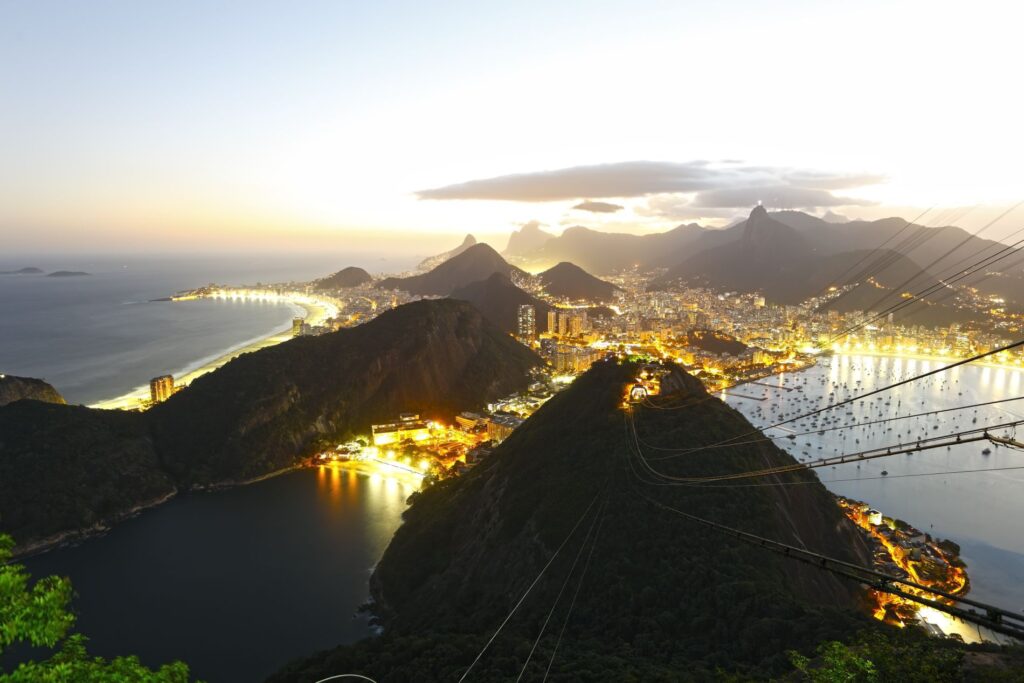
As most of our readers already know, we at TOCA are full-blown travelers. We are so aware of how the farther we get from home, the greater perspective we gain on who we are and how we handle life. Travel helps to shake us up… breaking up assumptions, and finding commonalities in cultures while embracing differences. Travel is a great barometer for discovering where we are challenged and where we feel comfortable. It pushes the envelope. Through travel you can learn a lot about yourself that you otherwise wouldn’t notice if you stayed at home. You might discover that you are confident where you thought you were shy, or the other way around. You might notice how open you really are (or how closed), how willing you are to take a leap of faith, how spontaneous you are in the face of the unexpected, or how reluctant you are to take a step towards the unknown. Travel is one of the best ways to expand and evolve yourself while taking the time to explore new cultures, attitudes, beliefs, and customs. Traveling to parts of the world where what we expect is not the norm is a way to expand our view as we learn not to take things for granted. Poorer countries that do not offer the amenities and comforts we may be accustomed to allow us to see how riches come in other forms, such as generosity and soul, and of course in nature’s beauty. Finding ways to appreciate what “is” rather than being dissapointed in not finding, for example, the local McDonalds or a luxury hotel, helps us gain perspective as it tests where we are rigid and where we are able to flow. We believe that one of the biggest commitments you can make to yourself is to not stay glued to your comfort zone. By taking yourself out of your daily routine every now and then you have the opportunity to re-charge your battery as you place yourself in settings that are out of the norm. At TOCA we recognize that breaking the routine is the best way to keep life sparkling and fresh. And then there is the return home where more often than not, we find more value in what we have. Somehow after travel, things that caused us to worry before we took off for points unknown seem less overwhelming. Travel truly puts life into a fresh context. When you don’t know what is around the next corner, when you push your comfort level by trying new things, when you realize you don’t have to speak the language to communicate, when you find that you have the skills to deal with the unknown, there is an enormous sense of achievement that takes root and stays with you always. It is this value that has helped each one of us become more self-realized, better at who we are and what we do, and always grateful when the time comes to pack our bags and ready the passport! www.tocaevents.com
Fiestón and Our Commitment to Sports Hospitality
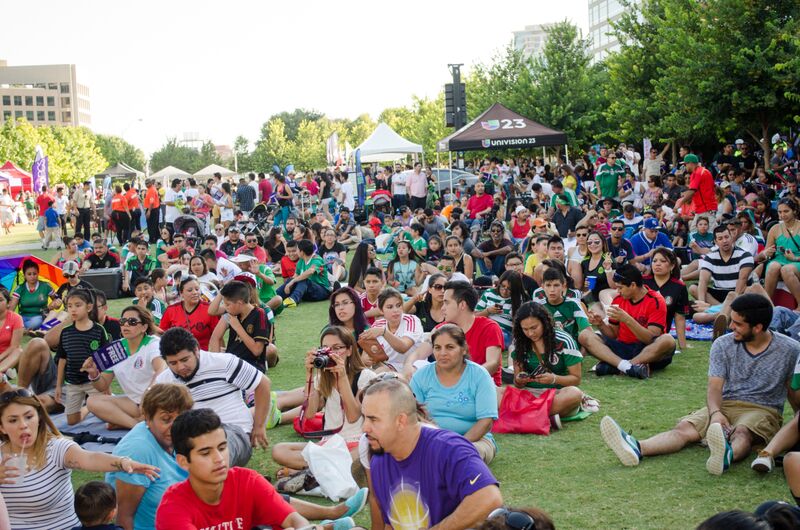
We’ve mentioned before that TOCA Events knows how to throw a party. But how about a party for a thousand people or more? Handling an enormous event requires an understanding of sports hospitality that includes the art of bringing sports, entertainment, and the public together in a true spirit of celebration. One of the best examples of how we show our stuff is for the Univision Deportes Fiestón events, and we have produced quite a few. From Phoenix to Dallas, L.A., Houston, and our latest event for theJuly 2015 Dallas SuperCopa MX and Campeon de Campeones , we help to make sports into one big festival that brings excitement to all. With popular anchors like Alejandro Berry, Jorge Calvo, and Aly Villegas, and soccer legends such as former Mexican National Team player Ramón Ramirez who delighted fans at Fiestón Phoenix, and Enrique Borja who came to our latest Dallas event, fans are already excited, even before the games begin. Add to this a giant screen where people can see their favorite teams play’ up close and personal,’ its easy to see how these live events capture a spirit that embodies everything that is great about sports. Entertainment is key for an event like Fiestón. We’ve marveled over mobs of girls sobbing over Mexican pop star Luis Coronel and thousands of fans going crazy over the band, El Dasa. We’ve watched people connect with each other over refreshments in the beer gardens, and we’ve been endlessly enchanted by kids of all ages playing with each other as they bond over common ground. Free admission assures that everyone can enjoy the Fiestón events, which is something that we at TOCA uphold as the perfect way to bring people together. We believe that sports hospitality is based on creating an atmosphere of celebration, excitement, sharing, and pure, unadulterated fun for everyone… and this is the spirit with which we help to build these magnetic events. TOCA Events makes sure that with every sporting event we produce everyone comes away with something special. Whether it is free books for children, a chance to interact with celebrities, play games, or just hang out in the sun, the final goal is to allow guests to spend a great day together and create a perfect memory. Creating a positive atmosphere for families and fans is a way to promote good feelings all the way around, giving everyone the chance to share their experiences with their friends at home. We carry this belief into all of the productions we create at TOCA Events, where every member of our team is dedicated to creating a celebratory event that stands out and leaves people feeling uplifted. With so many more sports events on our plate, we are delighted that we can bring a festive spirit to every production. At TOCA, we believe that infusing people with the spirit of unity and joy is one of the best ways to make the world a better place. For more information on TOCA Events sports hospitality: www.tocaevents.com
The Art and Science of the Party
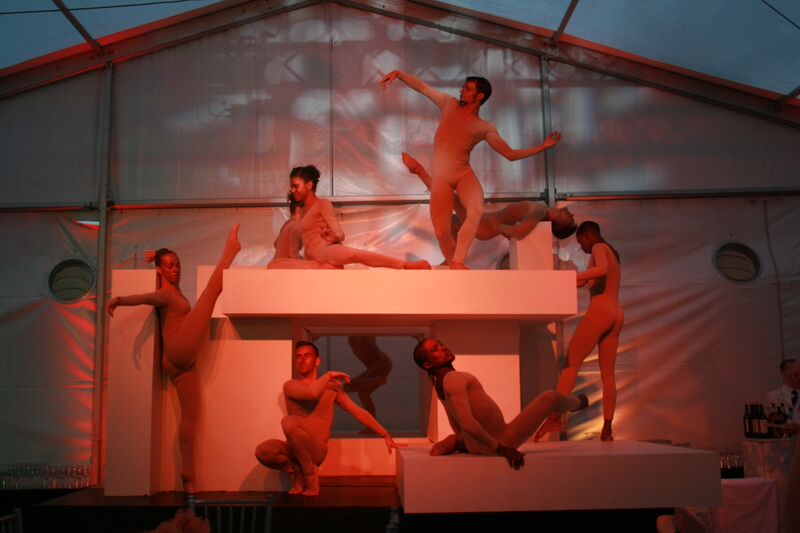
According to Dr. Joe Goldblatt, founder of the International Special Events Society, event planning is a $50 billion dollar a year industry, and growing. With corporations and private entities outsourcing for all aspects of their special events, we at TOCA are riding the big wave as we strive to perfect the art and science of the Party. As an event planning and destination management company that has been deeply entrenched in the business for a number of years, our list of loyal and new clients is constantly expanding. Our team of professionals is always exploring innovative ways to create parties that are exciting, memorable, unexpected, and on point with what our clients hope to achieve at the so-called end of the day. Planning and designing an event follows a complex road that includes the manifestation of the client’s idea, supervision of the party at all times, and making sure that all elements lead to the desired result. Whether the event is a private celebration, a promotion for a new product, part of a trade show, an educational conference, a commemoration, holiday party, company outing, or otherwise, our goal is for all of the participants to connect with each other through good conversation, networking, and having a great time letting their hair down. There is an enormous amount of pre-planning that goes into making a good party event. Every detail must be examined, from décor to food and beverages, entertainment, the musical playlist, accommodations, and so much more. We believe that the mechanics of creating a seamless event is the science of party-making, while the art is in making the festivities aesthetically pleasing and conducive to personal connection, merry-making, and relaxing. When it comes to corporate events, we know that a successful party is where there is personal interaction. This is what inspires corporate culture, builds brand loyalty, while also inspiring new customers. Corporate parties are designed to help grow business, and at TOCA Events, we create environments that foster personal conversations and a sense of camaraderie that spills over long after the party is over. As a special event and destination management company, TOCA believes in giving people a good reason to come to our parties. We pride ourselves on the ability to merge business with pleasure, where our events and the products or services that are being represented meet all along the way. We know the importance of maintaining a clear objective is the driving force behind every element that makes up a TOCA event. Customizing the party to a tee is a science. Giving guests an experience that is unexpected, exciting, and fun is an art. For more information on how TOCA Events can combine these two elements for your next private or corporate party, contact us today. www.tocaevents.com
The Transformation of Rio’s Favelas
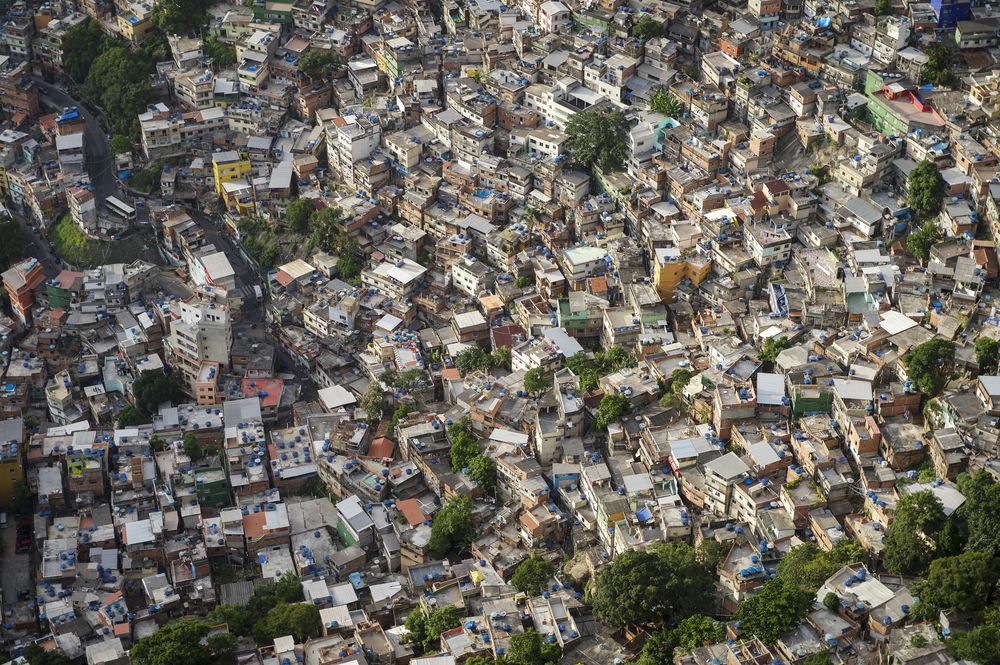
Favelas first appeared in Rio in the 19th century where they were built by soldiers with nowhere to live. Also called “barrios Africanos,” the favelas were home to former slaves with no claim to land or work. Then came the 1970’s when the migration of people from the deep countryside came to Rio to find work, finding themselves encamped in crowded and increasingly dangerous communities without sanitation, running water, or protection. Cities within the city, favelas have long been considered off limits. But with recent movements to “pacify” these areas through social change, many favelas have become more self-sustaining and productive. With running water, electricity, and other services, Rio’s municipal government is also putting in place green initiatives that are changing the face of these inner city areas. With approximately 763 favelas providing homes for over 1.4 million people, they provide a vital picture of a city that is known for diversity and flavor. Santa Marta is one of the best known favelas in Rio de Janeiro. When Spike Lee filmed Michael Jackson’s 1996 video for “They Don’t Care About Us” community pride coupled with this vibrant view of favela life started a positive chain reaction. This included the Favela Painting Art Project, inspired by the Dutch team Haas & Haan, inspiring locals to paint their homes in bright colors. Santa Model serves as a model for other favelas, with its new houses and free tram, along with its famous Michael Jackson statue. With local artisans contributing to this colorful community, Santa Marta is one of the main stops for tourists interested in becoming acquainted with the many facets of Rio de Janeiro. Vidigal is another favela favored by tour groups. With spectacular views over the Atlantic Ocean, the community now offers a beautiful walking trail for taking it all in, as well as guesthouses (pousadas), restaurants, clubs, and bars inside the favela itself. At Toca Events, we enjoy visiting the bohemian Santa Teresa district where artists and young locals provide a tangible excitement that is contagious. At TOCA Events, we are excited to be a part of creating a positive consciousness about these neighborhoods by sharing a new perspective on favela culture. Offering tours to view life in these neighborhoods is one way we help to open up communication and awareness. Recently our Director of Brand Interface, Fabio Pamplona, did a fashion shoot in one of Rio’s favelas, celebrating the spirit of the people. With Rio’s efforts to create a greener city through incentives such as reforestation to lower greenhouse gasses and attract more birds, the city has also created the “Morar Carioca Program” in the South Zone favelas of Bablilonia and Chapeu Mangueria. Encouraging sustainable buildings and other green solutions, these areas are helping to encourage eco-tourism and micro-industries that provide residents and visitors with a higher level of exchange. With holistic urban planning, favela infrastructure is improving, with better zoning and upgrades. Rio expects that by 2020 all of the favelas will benefit, meaning that a whopping 232,000 households will be affected! Visiting Favelas has become a big part of Rio’s tourism, especially since 2013 when the city’s tourism minister expanded plans to help residents develop new skills as a response to outside visitors. Government intervention has helped to expand resources, providing residents with more opportunities to work, live, and raise their families in a environment that supports a better quality of life. As an event production company always keen on providing our clients with creative options, TOCA Events is proud of every aspect of culture in Rio de Janeiro. In this spirit, our destination management team provides exciting tours of the city’s favelas as a compliment to your event. www.tocaevents.com [:pb] Favelas first appeared in Rio in the 19th century where they were built by soldiers with nowhere to live. Also called “barrios Africanos,” the favelas were home to former slaves with no claim to land or work. Then came the 1970’s when the migration of people from the deep countryside came to Rio to find work, finding themselves encamped in crowded and increasingly dangerous communities without sanitation, running water, or protection. Cities within the city, favelas have long been considered off limits. But with recent movements to “pacify” these areas through social change, many favelas have become more self-sustaining and productive. With running water, electricity, and other services, Rio’s municipal government is also putting in place green initiatives that are changing the face of these inner city areas. With approximately 763 favelas providing homes for over 1.4 million people, they provide a vital picture of a city that is known for diversity and flavor. Santa Marta is one of the best known favelas in Rio de Janeiro. When Spike Lee filmed Michael Jackson’s 1996 video for “They Don’t Care About Us” community pride coupled with this vibrant view of favela life started a positive chain reaction. This included the Favela Painting Art Project, inspired by the Dutch team Haas & Haan, inspiring locals to paint their homes in bright colors. Santa Model serves as a model for other favelas, with its new houses and free tram, along with its famous Michael Jackson statue. With local artisans contributing to this colorful community, Santa Marta is one of the main stops for tourists interested in becoming acquainted with the many facets of Rio de Janeiro. Vidigal is another favela favored by tour groups. With spectacular views over the Atlantic Ocean, the community now offers a beautiful walking trail for taking it all in, as well as guesthouses (pousadas), restaurants, clubs, and bars inside the favela itself. At Toca Events, we enjoy visiting the bohemian Santa Teresa district where artists and young locals provide a tangible excitement that is contagious. At TOCA Events, we are excited to be a part of creating a positive consciousness about these neighborhoods by sharing a new perspective on favela culture. Offering tours to view life in these neighborhoods is one way we help to open up communication and awareness. Recently our Director of Brand Interface, Fabio Pamplona, did a fashion shoot in one of Rio’s favelas, celebrating the spirit of the people. With Rio’s efforts to create a greener city through incentives such as reforestation to lower
Our Recipe for Event Planning Success
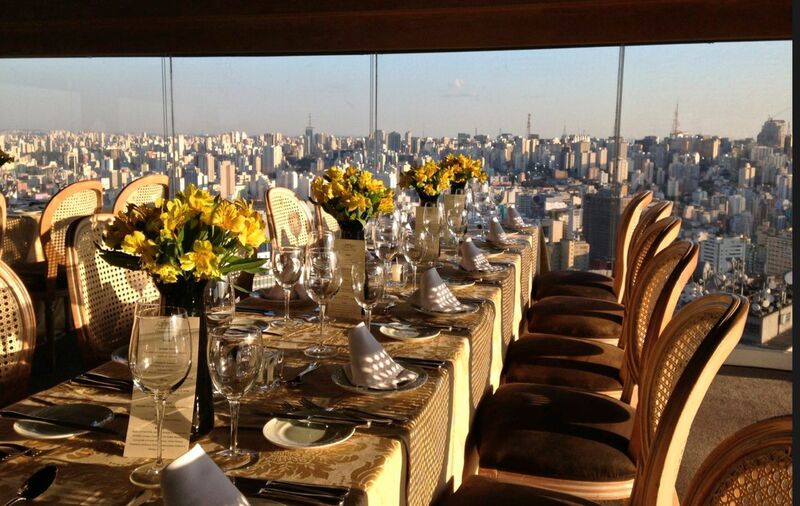
At TOCA we believe that the driving force behind every successful production comes from our inherent passion for its planning and creation. Having been in the event production business for many years, we are constantly excited by the prospect of a new project, from creating the perfect concept, to planning, building, and finally seeing the idea come to fruition. With the satisfaction of our clients and those who have participated in the event being our ultimate reward, we are always ready for the next challenge. Whether it is sports hospitality, business sessions, corporate or private parties, or anything in between, the elements that go into making each event a success are the same. Here are some of the precepts that we feel are critical for achieving the best possible results for everyone involved: Listening The art of listening is key when it comes to satisfying our clients. We need to know what they are looking for in an event, and most importantly what they hope to achieve as an end result. Sometimes our clients are not able to fully articulate exactly what they are looking for, so it is up to us to listen carefully and fill in the blanks. Listening implies good “people skills,” and at TOCA we pride ourselves on going the extra mile to understand just what our clients want so that we can successfully communicate their vision to all of our vendors who will help us consolidate the perfect outcome. Listening is also essential when it comes to working with our team. For us, every person working at TOCA is a peer, which creates an atmosphere of respect and an openness to new ideas. A good listener usually means that communication is open, and it is in this spirit that we uphold and honor the strengths of each one of our team members. Flexibility As TOCA Events grows, our productions become bigger and bigger, which also means they become more complex. Here is where it is essential to be flexible, with the ability to manage whatever surprises may come our way. This may be a change of vision or last minute changes from our client, a glitch in a schedule or performance, or any other exigency that might come up before, during, or even directly after an event. Flexibility implies resourcefulness, which means that we always have to be ready and able to provide a quick creative fix if the occasion arises. Big productions also mean we have to manage many teams at the same time. Here flexibility provides us with the ability to handle the many responsibilities that large events require, including staying calm when problems arise so that we can think and act quickly to resolve them. A Positive Attitude We know that the feel of a company trickles down from the top. If we as owners are positive, enthusiastic, and calm, our team will be as well. It is up to us to maintain the right mood at all times, regardless of what kind of pressure we may be under during the production process. Because of our experience level in event production, we are very rarely are up against situations that we cannot resolve with grace and ingenuity. And as multi-tasking pros, we love a good challenge, and find that this attitude is contagious amongst our TOCA team as well! Choosing the Right Team Any good manager knows that having the right team means everything. We have an incredible network of trusted pros that we can count on to help make every event into a star production. And of course having the right team means we can delegate without having to worry that the job won’t be done to perfection. Our core team works like a well-oiled machine, which is what makes a TOCA Event so recognizable. www.tocaevents.com
Revving Up for TOCA Cuba
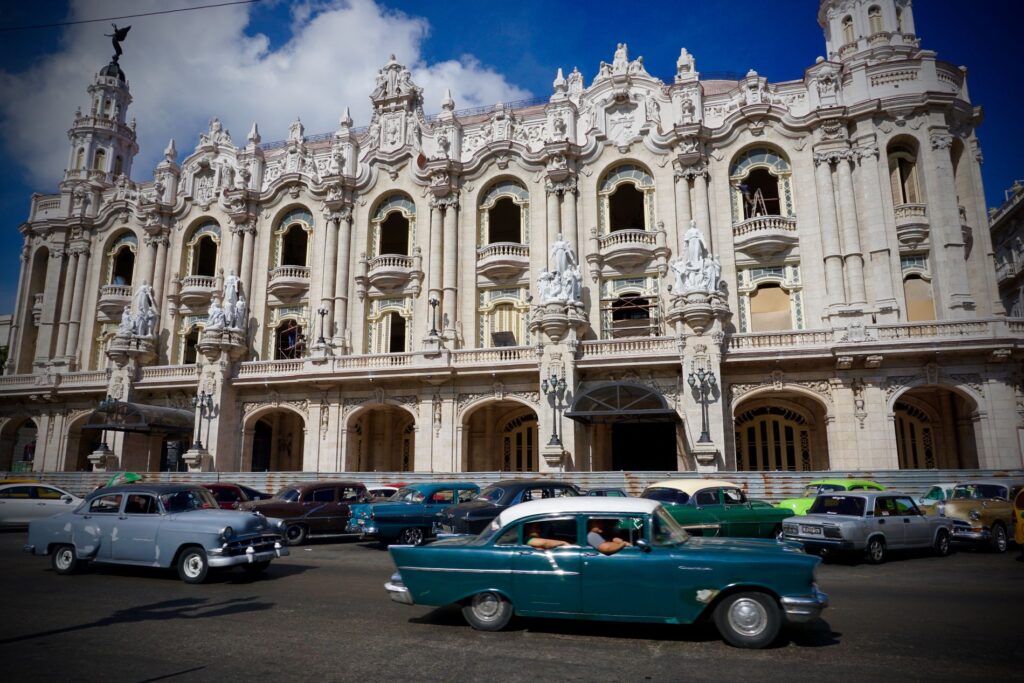
With its tropical climate; warm soothing waters; over 5,000 coasts bordering both the Atlantic and Caribbean; natural reserves, landscapes, and parks; and stunning UNESCO World Heritage sites, Cuba has everything it needs to becoming a leading tourist destination. Already plans are in action to update and expand the hospitality industry in order to accommodate the expected influx of business and resort tourism, and TOCA Cuba is in place to help coordinate what will be a boom in event production. With news of Obama’s opening the gates for a new relationship with Cuba, local entrepreneurs are excited about the fresh air that will finally enter their city. After the 50 year embargo, the nation stands to develop into a brilliant destination for meetings, workshops, congresses, festivals, and other special events, and we plan to be one of the major players in helping to develop the local economy. Just 90 miles from Key West, Florida, Cuba became a magnet for tourism back in 1915, when it was actually the most visited city in the Caribbean. Prohibition was on and the island was the place to go for its natural beauty along with legalized alcohol and gambling. During the great depression and WWII, tourism slowed down, only to build up again in the 1950’s until ’59 when Fidel Castro overthrew the pro-American dictator Fulgencio Batista. During this time foreign influx was looked down upon and new internal policies were created that led to JFK’s embargo in 1962, where Cuba turned to the USSR for support. Later on tourism came back into favor, driven by European and Canadian interest. Today visitors still need a license to enjoy the island, which can be found with licensed travel service providers. However with American travelers now able use their US credit cards, and cruise ship companies and airlines expanding their services to accommodate the expected huge influx of tourism, it is easy to predict the future. The hospitality industry is girding up, with Melia Hotels International opening a stunning hotel with 1,176 rooms on the island of Cayo Coco and many other hotels preparing for the competition. Even AirBnB now has approximately 1,000 listings in Havana alone! At TOCA Events we are excited about the renovation, renewal, and revenue that will positively affect the Cuban population. New strategies are coming into view and a positive trend is already in place for the first quarter of 2015 that according to “Hospitality On” shows that arrivals are up from the previous year by 14.2%. The vitality of the country has always been a powerful allure to anyone attracted to a population with heart and soul, a landscape that ignites the senses, and all the culture one could hope for in one place. Cuba boasts over 120 art galleries, 260 museums, over 80 theaters, along with exhibition halls and hotels that are made for world-class events. With all of this in mind, TOCA is already forming liasons with artists, vendors, and venues as we create an organic connection with the Cuban community. In service to our future involvement with Cuba, as well as with other Spanish-speaking countries, TOCA Events has now added a Spanish version of our website as we move into this next exciting phase. www.tocaevents.com [:pb] With its tropical climate; warm soothing waters; over 5,000 coasts bordering both the Atlantic and Caribbean; natural reserves, landscapes, and parks; and stunning UNESCO World Heritage sites, Cuba has everything it needs to becoming a leading tourist destination. Already plans are in action to update and expand the hospitality industry in order to accommodate the expected influx of business and resort tourism, and TOCA Cuba is in place to help coordinate what will be a boom in event production. With news of Obama’s opening the gates for a new relationship with Cuba, local entrepreneurs are excited about the fresh air that will finally enter their city. After the 50 year embargo, the nation stands to develop into a brilliant destination for meetings, workshops, congresses, festivals, and other special events, and we plan to be one of the major players in helping to develop the local economy. Just 90 miles from Key West, Florida, Cuba became a magnet for tourism back in 1915, when it was actually the most visited city in the Caribbean. Prohibition was on and the island was the place to go for its natural beauty along with legalized alcohol and gambling. During the great depression and WWII, tourism slowed down, only to build up again in the 1950’s until ’59 when Fidel Castro overthrew the pro-American dictator Fulgencio Batista. During this time foreign influx was looked down upon and new internal policies were created that led to JFK’s embargo in 1962, where Cuba turned to the USSR for support. Later on tourism came back into favor, driven by European and Canadian interest. Today visitors still need a license to enjoy the island, which can be found with licensed travel service providers. However with American travelers now able use their US credit cards, and cruise ship companies and airlines expanding their services to accommodate the expected huge influx of tourism, it is easy to predict the future. The hospitality industry is girding up, with Melia Hotels International opening a stunning hotel with 1,176 rooms on the island of Cayo Coco and many other hotels preparing for the competition. Even AirBnB now has approximately 1,000 listings in Havana alone! At TOCA Events we are excited about the renovation, renewal, and revenue that will positively affect the Cuban population. New strategies are coming into view and a positive trend is already in place for the first quarter of 2015 that according to “Hospitality On” shows that arrivals are up from the previous year by 14.2%. The vitality of the country has always been a powerful allure to anyone attracted to a population with heart and soul, a landscape that ignites the senses, and all the culture one could hope for in one place. Cuba boasts over 120 art galleries, 260 museums, over 80 theaters, along with exhibition halls and hotels that are made for world-class events. With all of this in mind, TOCA is already forming liasons with artists, vendors, and venues
Gallery Weekend in Berlin
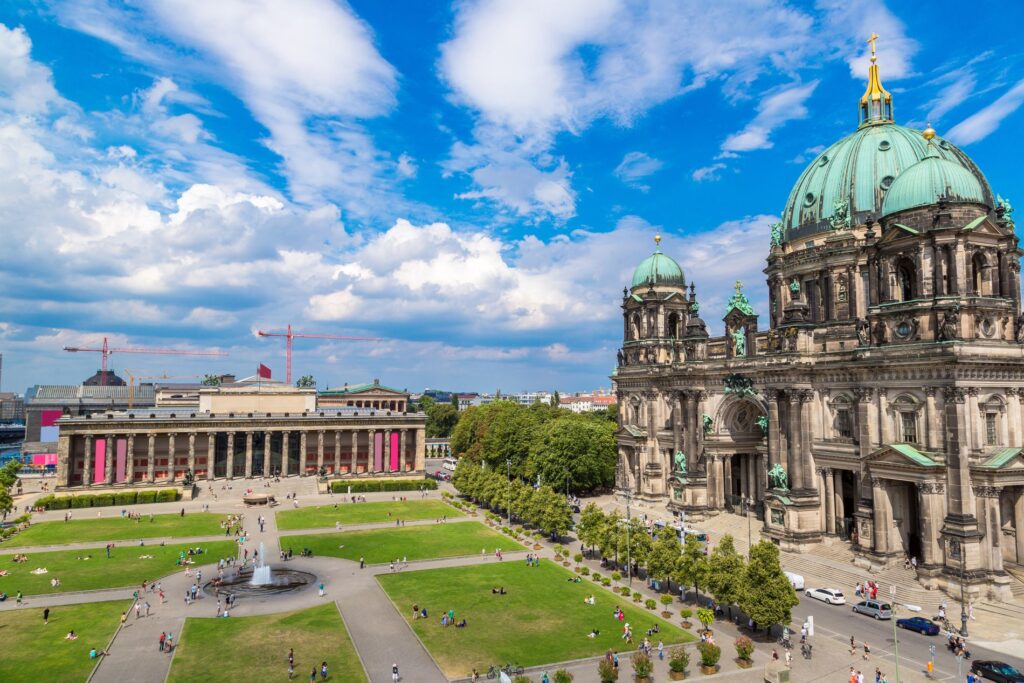
Back in the 1920’s, Berlin was the unequivocal capital of arts and culture in Germany. Movements like Neue Sachlichkeit (New Objectivity) and Secession, along with artists such as Max Beckmann, Käthe Kollwitz, and Edvard Munch, were a part of a scene that drew some of the most innovative creators into the city’s arms. Then came the long years during and after the war until the 1970’s and 80’s brought attention to art once again with an energy that included West Berlin’s Junge Wilde (Young and Wild movement). Since the Berlin wall fell in 1989, the city has enjoyed yet another Renaissance, with artists flocking from all over the world to experiment, show their work, and find inspiration from an atmosphere so open to creation and acquisition. From painting, to sculpture, photography, performance art, and installations, there is a constant buzz around the ongoing exhibitions, biennials, art trade shows, and grand events like the Documenta show in Kassel, which takes place every five years. In Berlin there is a huge opportunity for collectors, curators, and visitors to take in a scene that is intense, alive, and always evolving. Supporting the scene are an enormous quantity of exhibition spaces that include former factories, breweries, churches, boiler rooms, tower blocks, and office buildings that have been converted into galleries and work and living spaces for artists. Many of the spaces that were vacated by businesses after the wall came down became available for use through the initiative of organizations like Kulturwerk and the Berlin Senate. This unprecedented support for artists is what makes Berlin so unique. With over 150 not-for-profit and self-funded artists’ spaces all over the city, it is no wonder that Berlin is a mecca for artists who cannot afford to create work in other renowned cities across the globe. Current statistics say that there are over 20,000 international artists now living in Berlin. Grant programs to support studios are prevalent, giving way to more than 830 subsidized artists’ studios and studio apartments. With excellent grants, such as the DAAD artists program and Kunstlerhaus Bethaniene, international artists can get assistance for coming to the city to both create and show their work. The National Galerie is another supporter of contemporary art, giving prizes to young artists since 2000. Art collectors in Berlin also do their part to help to create studio spaces in obscure spaces, such as abandoned crematoria and even a former Communist party carpark. Putting their private collections on public display, may of these collectors create exciting events, such as Christian Boros’ show that was housed in a former WWII bunker. Another exciting venue is in the Hamberger Bahnhof where Heiner Bastian’s collection features works from the “art brut” movement, including pieces by Joseph Beuys, Damien Hurst, Anselm Kiefer and more. As a center for contemporary art, one feels a special vitality in the air, with a youthful and vigorous scene that is a given for a city that prides itself on a sophisticated forward-mindedness. There are a plethora of galleries in Berlin neighborhoods such as Mitte, Kreuzberg, Potsdammer Strasse, Charlottenburg, and even various apps like EyeOut Berlin and INDEX Berlin that follow the art trends throughout city. The 11th Gallery Weekend Berlin begins on April 30 and runs through May 4. Founded as a private initiative amongst local Berlin galleries, this year has 47 of them exhibiting works from both new and established artists. http://www.gallery-weekend-berlin.de/ www.tocaevents.com [:pb] Back in the 1920’s, Berlin was the unequivocal capital of arts and culture in Germany. Movements like Neue Sachlichkeit (New Objectivity) and Secession, along with artists such as Max Beckmann, Käthe Kollwitz, and Edvard Munch, were a part of a scene that drew some of the most innovative creators into the city’s arms. Then came the long years during and after the war until the 1970’s and 80’s brought attention to art once again with an energy that included West Berlin’s Junge Wilde (Young and Wild movement). Since the Berlin wall fell in 1989, the city has enjoyed yet another Renaissance, with artists flocking from all over the world to experiment, show their work, and find inspiration from an atmosphere so open to creation and acquisition. From painting, to sculpture, photography, performance art, and installations, there is a constant buzz around the ongoing exhibitions, biennials, art trade shows, and grand events like the Documenta show in Kassel, which takes place every five years. In Berlin there is a huge opportunity for collectors, curators, and visitors to take in a scene that is intense, alive, and always evolving. Supporting the scene are an enormous quantity of exhibition spaces that include former factories, breweries, churches, boiler rooms, tower blocks, and office buildings that have been converted into galleries and work and living spaces for artists. Many of the spaces that were vacated by businesses after the wall came down became available for use through the initiative of organizations like Kulturwerk and the Berlin Senate. This unprecedented support for artists is what makes Berlin so unique. With over 150 not-for-profit and self-funded artists’ spaces all over the city, it is no wonder that Berlin is a mecca for artists who cannot afford to create work in other renowned cities across the globe. Current statistics say that there are over 20,000 international artists now living in Berlin. Grant programs to support studios are prevalent, giving way to more than 830 subsidized artists’ studios and studio apartments. With excellent grants, such as the DAAD artists program and Kunstlerhaus Bethaniene, international artists can get assistance for coming to the city to both create and show their work. The National Galerie is another supporter of contemporary art, giving prizes to young artists since 2000. Art collectors in Berlin also do their part to help to create studio spaces in obscure spaces, such as abandoned crematoria and even a former Communist party carpark. Putting their private collections on public display, may of these collectors create exciting events, such as Christian Boros’ show that was housed in a former WWII bunker. Another exciting venue is in the Hamberger Bahnhof where Heiner Bastian’s collection features works from the “art brut” movement, including pieces by Joseph Beuys, Damien Hurst, Anselm Kiefer and more. As a center for contemporary art, one feels a special vitality in the air, with a youthful and vigorous scene that is a given for a city that prides itself on a sophisticated forward-mindedness. There are a plethora of galleries
The Excitement of Fieston
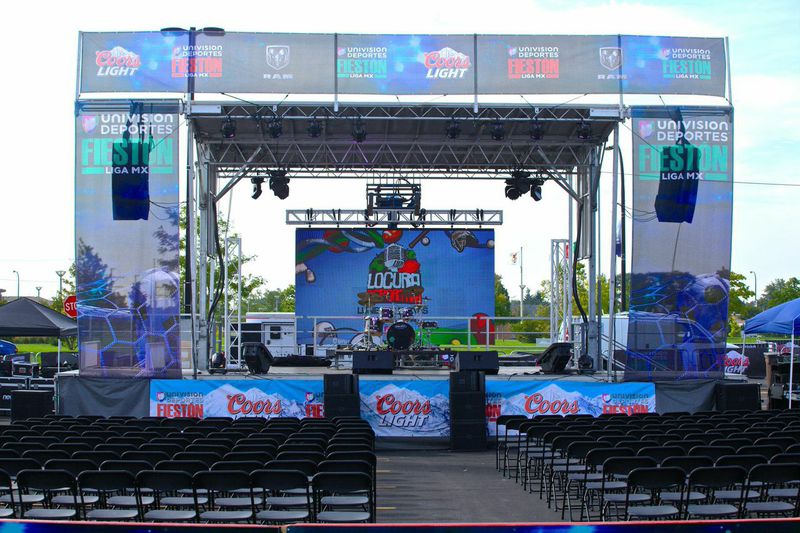
Having created several events for FIESTON, we at TOCA Events are always excited when we are asked to sign the next contract. An event that attracts thousands of people of all ages, we become just as swept away as everyone else when the gates open and the day begins. With FIESTON Cicero and FIESTON L.A. under our belts, our latest FIESTON has us in Phoenix, Arizona. Here we are continuing our multi-contract with Univision Communications to produce the FIESTON Liga MX live viewing event, coming up on April 26th, 2015. As the broadcast network for Liga MX, Univision is bringing this public event to Phoenix for the first time, working in collaboration with host venue Chase Field to cross promote the Liga MX with Phoenix’s major league baseball team, the Arizona Diamondbacks. Joining forces with Chase Field’s Hispanic Festival, we at TOCA Events are helping to create an exciting family-oriented experience that is open to the general public. In addition to a live viewing of the much anticipated Chivas vx America soccer match, FIESTON Phoenix will offer something for everyone. From the 3×3 soccer pitch, painters, and interactive games for kids, to the Coors Beer Garden, Tequila Tasting, and a range of performances including folkloric dance, Mariachi and live bands for adults, this will be a thrilling and fun-filled day that will ignite the entire Phoenix community. Reaching Univision’s international audience, the event includes pre-game and halftime segments that will be broadcast to live from the Univision Sports Desk, situated in the center of the event footprint. The broadcast will be hosted by renowned presenters Jorge Calvo and Alejandro Berry of the popular show, “Fantasticos del Frio.” The two will be joined by star soccer player Ramón Ramírez, one of the greatest Mexical league and national team players who retired in 2000. Ramírez will be at the Sports Desk with the two hosts providing insights and commentary, and will also be available for autographs and photos with guests at specified times throughout the day. FIESTON culminates with a live performance by none other than the young Mexican superstar, Luis Coronel. With hits like “Será Mas Facil” and “Escápate,” Coronel won the Latin Billboard Artist of the Year in 2014 and Regional Mexican Artist of the Year in 2015 and is bound to set the field on fire with his charisma and talent. As with all of the FIESTON events, we are expecting an extremely large turnout in Phoenix, with families and especially kids immersing themselves in the experience. In the past we’ve seen between 4,000 – 8,000 guests attend FIESTON, and we are projecting that FIESTON Phoenix will be no exception to the rule. FIESTON Phoenix is open to the general public from 11am to 7pm on April 26th at the Chase Field Plaza located at 401 East Jefferson Street, Phoenix. www.tocaevents.com
The Quintessential Fashion of Rio

There’s something in the air in Rio de Janeiro that no other city on earth shares. It is a combination of the deep and burning sensuality that comes from the city’s history, combining Portuguese, French, and African roots with an electrified atmosphere that the landscape itself invites. In Rio, the 20’s to the 50’s were considered the “Golden Age,” with the first big wave of international society flocking to the city for all the glamour it offered. Through all of the ups and downs in between, Rio de Janeiro has become a city that combines leisure with commerce, inviting an increasingly stabile economy and a contemporary pulse that cannot be denied. And with this, comes the quintessential flavor that is all Rio’s own. Captured by our own TOCA Events photographer, Fabio Pamplona, it is easy to see why fashion is the big metaphor for the Rio de Janeiro lifestyle. From famed Brazilian models such as Giselle Bündchen to the inimitable and ubiquitous Brazilian bikini, this is the place where sensuality and beauty meets an industry that thrives on all that the city has to offer. Combine the exquisite landscape of golden sand, green waters, and lush tropical mountains with the everyday sights of gorgeous inhabitants and you have an aesthetic recipe made in heaven. Here street fashion is just as potent as the pages of design you find in the magazines. From the beach to the runway, Rio’s exuberance is evident in the rich colors and breezy fabrics used by local designers, as well as the fit and tanned models who wear them. No matter in what corner you find Rio fashion, you will always find a sense of joy and festivity in the wearing… brought out by the sun, the music, and the rhythm of this city that brings out the best in everyone. At TOCA Events there is not a day that goes by where we are not celebrating our presence here in Rio. With heart-stopping views of local flora and fauna, we are constantly inspired. And of course, having the opportunity to introduce so many of our clients to the excitement and beauty of the culture is an extra bonus. For information on offering your event here in Rio, contact us at: www.tocaevents.com www.tocaevents.com

